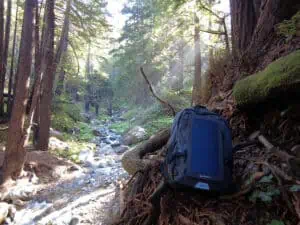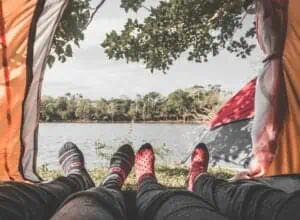How to Stay Warm in a Tent Without Electricity
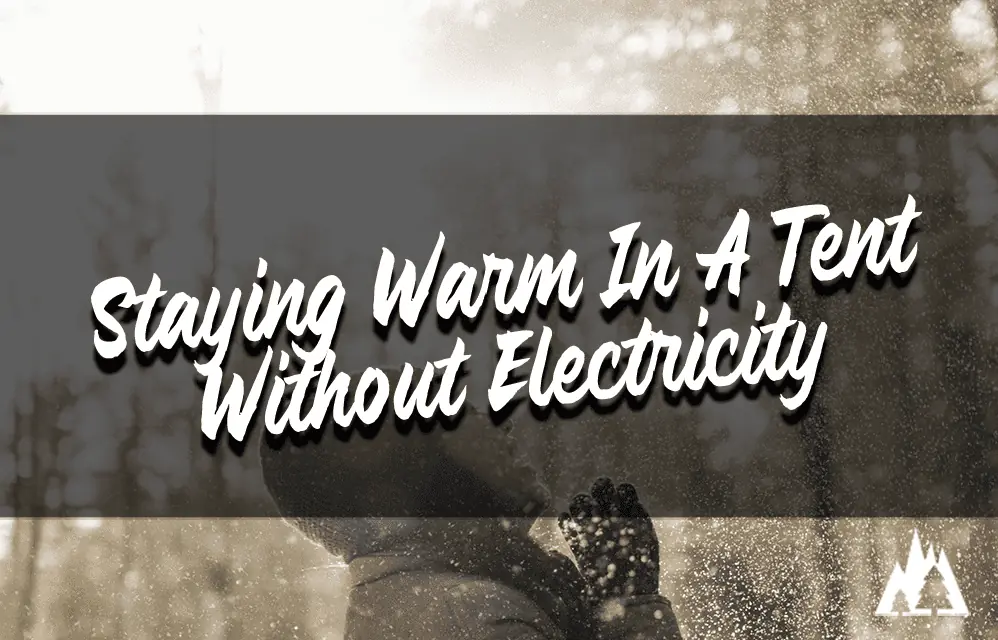
I’ve been there. Sleeping in a tent at night can be cold. Really cold.
Even in California, where we spend most of our camping trips, it can still get a little nippy at night.
And there’s nothing worse than having a terrible night’s sleep while camping.
Most campers are concerned about using electronics or propane gas heaters while sleeping in a tent.
So that begs the question many folks are asking themselves, how to stay warm in a tent without electricity?
When camping in cold weather, staying warm can be a challenge.
Fortunately, several effective ways to stay warm without relying on electricity exist.
I’ve got some great ideas that will keep you cozy outdoors during chilly nights.
I’ll detail how to keep your tent warm without electricity during your winter camping trips, such as:
- Clothing
- Body Heat
- Tent Insulation
- Sleeping Bags
- High-Calorie Mean Before Bedtime
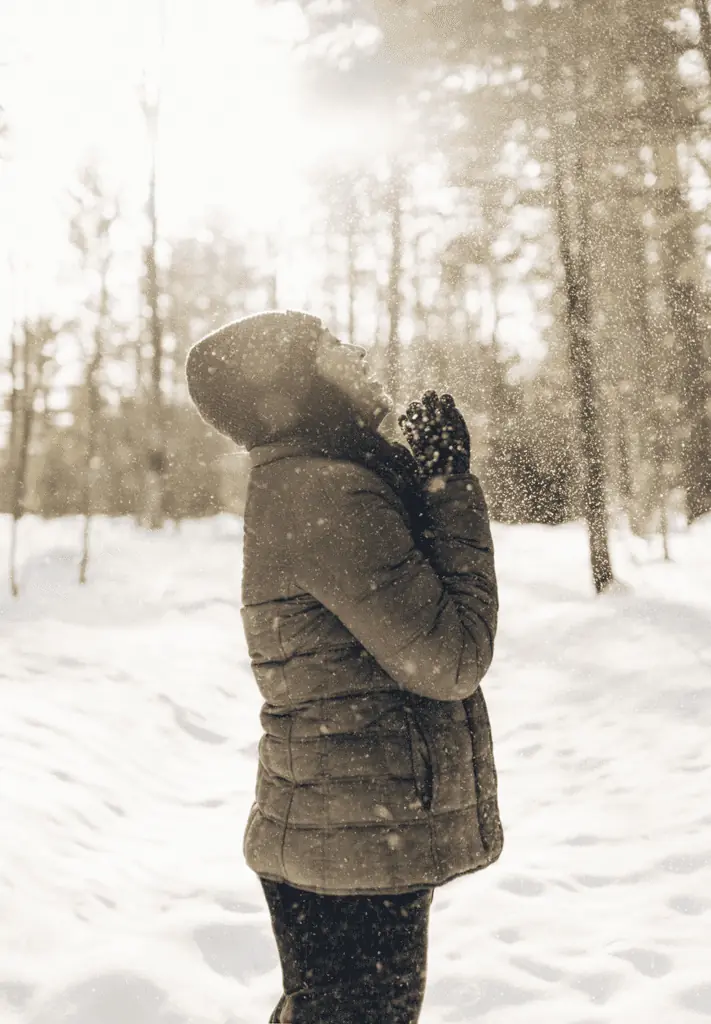
Wear Layers of Clothing
One of the easiest things to do is to dress for cold weather conditions.
It may seem like common sense to most, but materials matter.
Choosing the right materials for your layers, such as wool or synthetic fabrics designed to keep you warm and dry. Layering up multiple thin clothing items can help trap air between them and provide more insulation than one thick item alone.
Don’t forget accessories like hats, gloves, and scarves, which will help keep your extremities warm even when temperatures drop below freezing.
Choose the Right Materials
Wool and synthetic fabrics are great for winter camping because they wick away moisture from sweat while still providing warmth. Look for lightweight yet insulating materials that won’t add too much bulk but will still protect you from the elements. Avoid cotton if possible since it absorbs moisture instead of repelling it as other fabrics do.
How To Layer For Maximum Warmth
When layering for winter camping or for chilly nights in general, the type of clothing I wear needs to fulfill 4 main criteria:
- Comfortability
- Mobility
- Protection from elements
- Warmth (Obviously)
Keeping these 4 criteria in mind, here’s how I would layer up:
Layer 1 (base layer): Start by putting on a long sleeve shirt made from materials such as cotton or other materials that feels comfortable on the skin. I like wearing dry-fit athletic long sleeves to help wick away sweat and keep me dry.
Layer 2 (mid-layer): I then add a light sweater made of wool or fleece for extra insulation against the cold air outside.
Layer 3 (outer layer): Add an outer shell layer, such as a waterproof jacket or coat, overtop everything else to seal in all the heat I’ve created underneath it so far.
This layering system allows you to adjust how many clothes you need depending on how cold it is outside without having to take off any items once they become too hot inside your tent later on during the night hours when temperatures drop significantly outdoors.
You can also use a loose neck gaiter to cover your face while sleeping; it will shield your skin from the cold.
Layering your clothing is an easy and effective way to keep warm without electricity.
Utilize Body Heat
One of the perks of camping with my entire family (including my dog) is the added body heat generated inside the tent.
Cuddling up with a friend, family member, or pet is one of the best ways to utilize body heat when camping.
This can be done in a tent, sleeping bag, or even under blankets. Not only does it provide warmth but also comfort and companionship. So it’s important to make sure that everyone involved is comfortable and not too hot or cold before cuddling up together.
You can stay warm in a tent without electricity by utilizing body heat.
If you’re more of a solo camper or camp with friends, but you all have your own solo tent, insulating your tent would be the next best option.
Insulate Your Tent
A foam or air mattress pad will help insulate your body from the ground and keep you comfortable during cold nights.
One of the metrics you should look for when shopping for cold-weather mattress pads is the R-Value.
A sleeping pad’s R-value measures its capacity to resist heat flow through it (hence the “R”). The higher a pad’s R-value, the better it will insulate you from cold surfaces. Sleeping pad R-values range from less than 2 (minimally insulated) to 5.5 or more (very well insulated).
REI
Hang Blankets or Curtains Around The Tent Walls
Hang blankets or curtains around the tent walls for extra insulation; this will also block out any drafts of wind coming through your tent walls. Place insulating material underneath your sleeping bag; look for foam pads, bubble wrap, or even old newspaper to create an extra layer of warmth between you and the cold ground.
If you have a larger tent with divided curtains to separate rooms, use it to decrease the amount of space you have when sleeping to retain body heat longer.
If possible, hang curtains all around each wall panel which will give more coverage than just using blankets alone but makes sure they don’t touch any heat sources like candles or lanterns inside the tent, as this could be dangerous if left unattended too long.
Hot Water Bottles
Using hot water bottles can help keep you warm while camping.
I personally don’t do this much since I’ve done proper layering with my clothes and have multiple people inside my tent.
But it’s an option that most people have done, so I wanted to address this in my post.
Hot water bottles are great for keeping your feet warm on cold nights, be careful when using these items, as they may become too hot if left unattended for too long.
Create Heat Sources Inside the Tent
Here are two other ways that I personally use often to keep my family and me warm when camping.
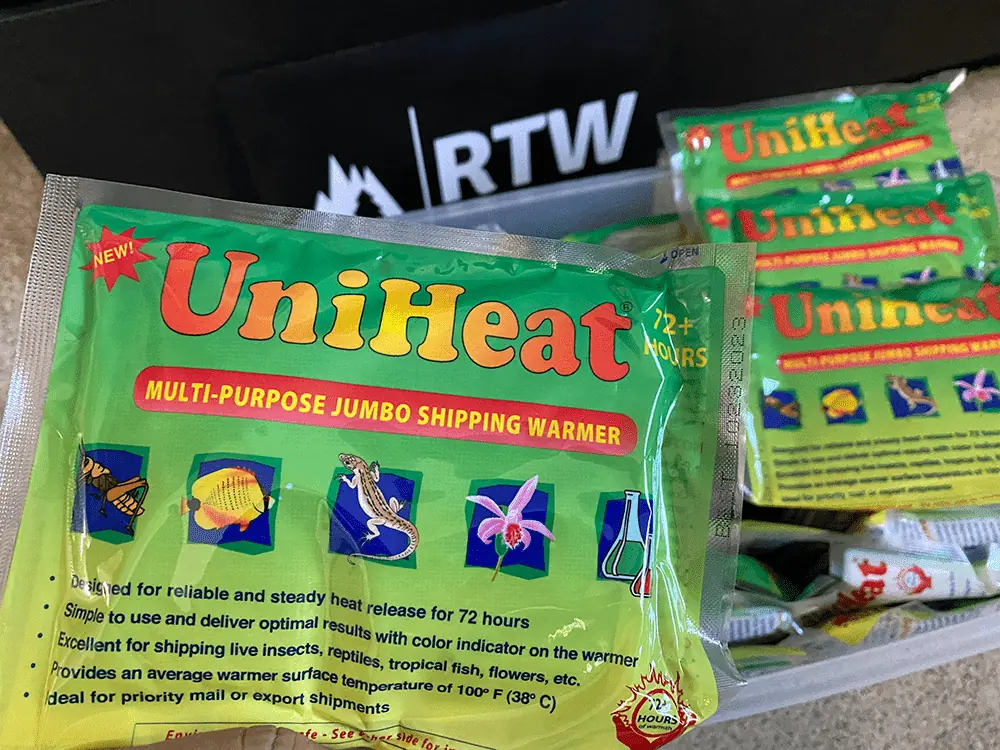
Disposable Hand Warmers
Disposable hand warmers are small packets that generate heat when the iron oxidizes by air exposure. The ones we get can last up to 72 hours; we throw them away afterward. These are great to place inside our jacket pockets when inside a sleeping bag.
I have also noticed that there are rechargeable hand warmers on the market, I can’t speak for them, but the reviews look decent.
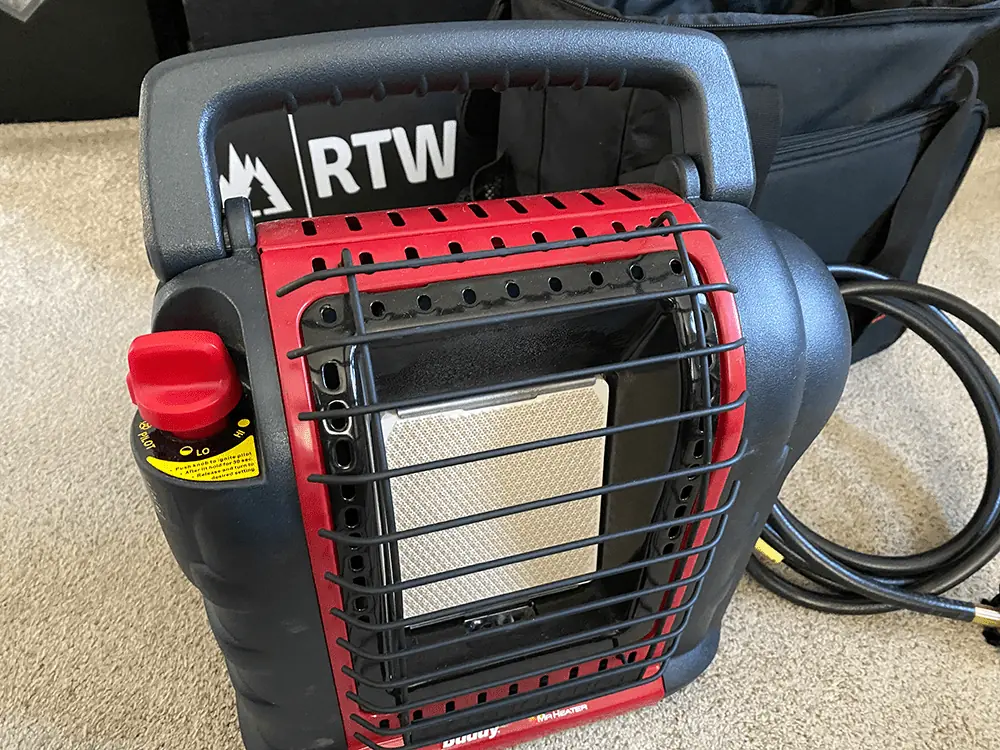
Radiant Propane Heater
I use my radiant heater whenever we camp in the year’s colder months.
There are safety precautions, however, when using tent heaters.
You should never leave your heater on while you sleep due to the risk of something catching on fire.
Also, make sure your camping tent is well-ventilated to prevent carbon monoxide poisoning.
I use my propane heater to turn it on for about an hour or so inside the tent before bedtime.
Camping heaters should never be left unattended.
FAQs
How cold is too cold to sleep in a tent?
The temperature at which it is too cold to sleep in a tent varies depending on the individual and their comfort level.
Generally, temperatures below freezing (32°F/0°C) can be uncomfortable sleeping in a tent.
It’s important to dress appropriately with layers of warm clothing and use an insulated sleeping pad or bag to stay warm.
If camping in extremely cold weather, consider using additional insulation, such as snow walls or blankets around your tent for extra warmth.
Also, ensure your tent is properly sealed from drafts and wind chill by checking seams and zippers before bedtime.
Is there a heater that can be used in a tent?
Yes, several types of heaters can be used in a tent, but with caution.
Portable propane heaters are the most popular option as they provide a reliable source of warmth and don’t require electricity.
Another option is an electric heater, which requires access to an electrical outlet but provides more consistent heating than propane.
Whichever type of heater you choose, ensure it is safe for indoor use, and follow all manufacturer instructions when setting up and operating your device.
What can you use to keep warm without electricity?
There are a variety of ways to keep warm without electricity.
Layering clothing is the most effective and easiest way to stay warm in cold temperatures. Wearing multiple layers of lightweight, breathable fabric will trap body heat and help maintain warmth.
Wool or synthetic materials can provide additional insulation from the cold.
Blankets and sleeping bags can also be used to create extra warmth when outdoors.
For those who have access to firewood, building a campfire is an excellent way to generate heat while camping or hiking in colder climates.
Lastly, hot water bottles filled with boiling water can be placed inside your sleeping bag for added warmth during long nights spent outdoors, and disposable hand warmers.
How do I cold-proof my tent?
Cold proofing your tent is important to ensure a comfortable and safe camping experience.
To cold-proof your tent, start by choosing the right materials. Look for tents made of synthetic fabrics such as nylon or polyester that are treated with a waterproof coating.
Make sure all seams are sealed properly with seam sealer or tape to prevent water from seeping in.
Add extra insulation like blankets or sleeping bags inside the tent walls to keep warm and cold air in.
Finally, use a ground cloth (often called tent footprints or tarp) underneath your tent to help insulate it from the cold ground below.
Before You Go
No one likes a ruined camping experience by freezing inside their tent. If this was helpful for you, I highly recommend you check out my other camping-related resources below:

